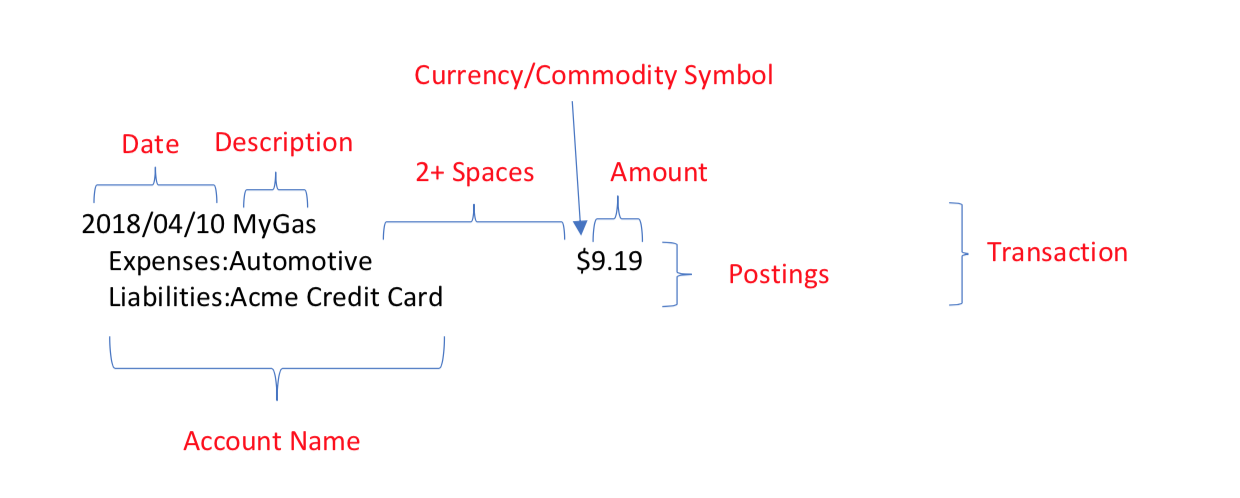Journal entries
Here's the journal entry for a common type of transaction - a purchase - with the parts labelled in red. You can read more about each part in the manual if needed.:
 This entry means: "on april 10th 2018, there was a $9.19 car-related expense, paid with the Acme credit card".
This entry means: "on april 10th 2018, there was a $9.19 car-related expense, paid with the Acme credit card".
A few more notes:
-
To reduce errors, we use Double Entry Bookkeeping. This means we always record both the source and the destination of money - where it came from and where it went.
-
Expenses:Automotive, a spending category, is just another kind of account. It's not a physical account like your wallet (AKA assets:cash), or a bank account (like Liabilities:Acme Credit Card); it's an expense account.
-
We use a convenient sign notation: money leaving an account (a Credit, in bookkeeping language) is written as a negative number, and money entering an account (a Debit) is written as a positive number.
-
Because of 1 and 3, the amounts in a transaction's journal entry must always add up to zero. This helps prevent errors and guides us toward writing correct entries.
-
Why is there no amount next to Liabilities:Acme Credit Card ? As a convenience, we are allowed to leave one amount blank, and it will be inferred automatically (eg $-9.19 is inferred above). This is optional; it saves typing.
(Part of hledger by example.)